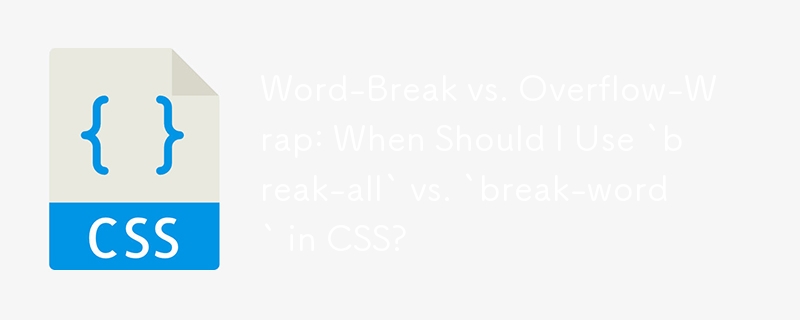

Understanding the Nuances of "word-break: break-all" and "word-wrap: break-word" in CSS
In the realm of CSS, two properties emerged to address the challenge of fitting text within the confines of a container: "word-break: break-all" and "word-wrap: break-word." While both appear to break words that exceed the container's width, a subtle distinction lies between them.
word-wrap: break-word
The "word-wrap" property, now renamed to "overflow-wrap," employs a sophisticated approach to text wrapping. It deftly wraps words to the next line, while meticulously ensuring that individual words remain intact. This behavior is particularly useful for maintaining the coherence of continuous words within a sentence, as spaces are dynamically adjusted to accommodate the full length of the word.
word-break: break-all
In contrast, "word-break" takes a more forceful approach. It ruthlessly breaks words into smaller segments, regardless of whether they represent individual words or continuous stretches of text. This approach can inadvertently separate characters within a single word, potentially introducing visual disruptions.
Usage Distinction
When confronted with dynamically populated fixed-size spans, "word-wrap" emerges as the preferred choice. Its ability to preserve word integrity while fitting within constraints makes it ideal for situations where content can change dynamically, ensuring that continuous words remain unbroken.
However, when the preservation of individual words is not of utmost importance, either property can be employed. The choice may depend on the specific requirements of the application.
The above is the detailed content of Word-Break vs. Overflow-Wrap: When Should I Use `break-all` vs. `break-word` in CSS?. For more information, please follow other related articles on the PHP Chinese website!




